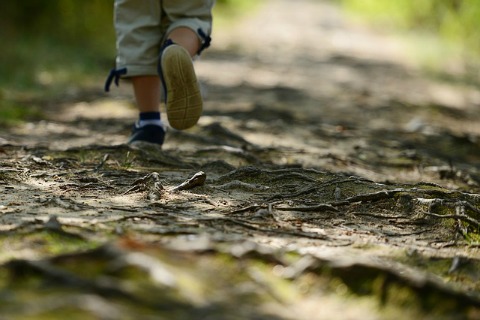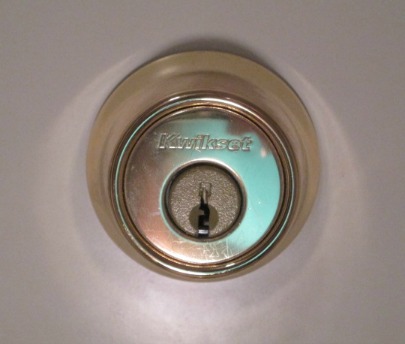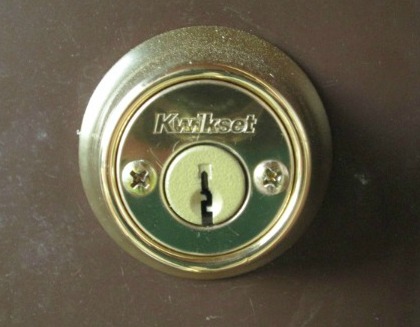- Home
- Avoiding Danger
- Autism Wandering
Autism Wandering: Steps to Take to Protect Your Child
The danger of children with autism wandering from home or school is a terrifying reality for parents. What can we do to protect our kids? In this article, I'll do my best to answer this question.
Some parents deal with this problem daily. I don’t know what could be more stressful and downright frightening.
Some children with autism have never had a problem with wandering, and that’s great. But please don’t assume that if a child has never wandered or bolted from the house that they never will. As I related in the true story about Michael, there is a first time for everything.
And if little Suzie has never run away from the house before and one day decides, in a fit of anxiety, that she just has to run, the result could be fatal.

Tragically, This Has Happened to Many Children...
Sheila Medlam of Colwich, Kansas wishes every day that she had taken better precautions before her 5-year-old son Mason squirmed out of a window that had been raised 8 inches because of a malfunctioning air conditioner.
She reported that it only takes a moment of inattention and they can be gone in an instant.
Tragically, Mason drowned in a pond in July 2010 after he disappeared from his home.
It pains me to hear about such disasters so much that I want to do all I can to prevent more accidents from happening.
That’s why I want to encourage parents reading this to look at their homes, schools and other places where their children spend time. It’s important that we find out how we need to change our surroundings to prevent our kids with autism from wandering or bolting into danger.
Lower the Risk of Your Child With Autism Wandering From Home or School
The following are measures we can take to keep our kids safe.
1. Have a security system installed that sounds an alert when any door or window is opened.
You can find inexpensive alarms for the doors and windows at places like Walmart or RadioShack. Alarm systems from companies such as SimpliSafe and ADT also come with these window and door alerts.
When we moved into our condo, this was one of the first things we did because I knew my son might try to escape one day. I wanted to know immediately the moment he ever might try to leave the house.
The National Autism Association is also taking active steps to lower the risk of children with autism wandering from home. They provide two door alarms as part of their free Big Red Safety Box for parents who apply. More on this later.
2. Even if your child has never attempted to wander, have locks installed on your doors that require a key to exit.
If your child is very young, you may only need a safety chain latch at the top of the door where it's hard for them to reach. But as they grow older and taller, you will probably require new locks. Installing a double cylinder deadbolt is fairly simple and inexpensive, and could save your child’s life.
You can buy one at the local hardware store for less than 20 bucks.
I’m about as unhandy as the next mom, and I was able to install a double cylinder deadbolt on both our front and back doors by myself (with a bit of coaching by phone from my brother-in-law:-).
And be sure to install it with the screws on the inside of the house. If you do this incorrectly, anyone with a screwdriver could break into your home.
 The outside part of a double cylinder deadbolt looks the same as any other deadbolt. The outside part of a double cylinder deadbolt looks the same as any other deadbolt. |
 The inside part of the deadbolt. Both sides require a key to open the door. Remember: screws on the inside! The inside part of the deadbolt. Both sides require a key to open the door. Remember: screws on the inside! |
Important: Safety Information In Case of Fire
When installing a double cylinder deadbolt, it’s extremely important to keep an extra key in a special place close to the door in case of fire. Tell everyone in the house (except the child with autism) where the key is located. That key should be removed only in case of fire.
We keep our key hanging on a hook behind the coats inside the coat closet right next to the front door.
Because of the possibility of a fire, it may seem risky not to tell an autistic child where the key is located. But that would obviously defeat the purpose of having this type of deadbolt. We don’t want them escaping.
This may be obvious, but I must state this just in case: For safety reasons, NEVER leave a child or teenager with autism home alone. Besides the obvious reasons that autistic children could be a danger to themselves, someone should always be with them to help them out of the house if there is a fire.
3. Anticipate that your child could attempt to open a window and escape that way.
I asked my brother-in-law, who is a former police officer, how I could secure my windows just in case. Since my windows open by pulling them upward, he recommended placing a dowel or stick in the vertical track either on the left or right-hand side of the window.
The dowel could be secured with a little strapping tape to keep it from falling out of place and even painted the same color as the window track to hide it.
Make sure you place the dowel in the window when they aren't watching so they don’t know it’s there.
If they attempt to open the window, they’ll just think it’s locked. If your window opens from side to side, place the dowel in the bottom horizontal track of the window.
4. Make sure the child safety locks in all your cars are engaged.
Most if not all newer cars are equipped with child safety locks. If yours aren’t, I would either have them installed or purchase a car that's equipped with them.
Expensive? Yes, but taking these measures could save your child’s life. I’ve heard too many frightening accounts of children opening the car door while the car is in motion.
5. Discuss autism wandering prevention with your child's teachers and therapists.
If your child goes to school or therapy, find out if sufficient safety measures are in place there. If there are any safety measures lacking, ask them to work on having these protections installed.
More Steps Ahead...
The mere thought of our children with autism wandering is so frightening that it becomes imperative that we do all we can to prevent it from happening.
With that in mind, we can do even more to prevent such a tragedy from occurring. Just follow the link below to learn more.
1 | 2



New! Comments
Have your say about what you just read! Leave me a comment in the box below.